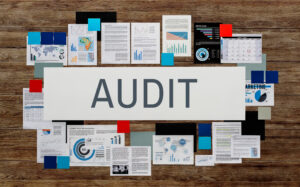Article 8: How AS9100 Rev D Aligns with ISO 9001:2015
- Introduction
- Alignment of AS9100 Rev D with ISO 9001:2015
- Key Benefits of Alignment
- Implementing AS9100 Rev D with ISO 9001:2015
- Conclusion
- Get Started with AS9100 Rev D Overview
Introduction
AS9100 Rev D and ISO 9001:2015 are both essential quality management system standards, but while ISO 9001 applies across various industries, AS9100 Rev D is specifically tailored to the aerospace sector. This article will explore how AS9100 Rev D aligns with ISO 9001:2015 and why this alignment is beneficial for aerospace companies looking to enhance their quality systems.
Alignment of AS9100 Rev D with ISO 9001:2015
AS9100 Rev D is built on the same foundation as ISO 9001:2015, but it includes additional requirements specific to the aerospace industry. Both standards share the same high-level structure, which facilitates integration. The key differences lie in the additional clauses that are unique to aerospace manufacturing, such as risk management, supply chain controls, and product realization. However, core principles such as customer satisfaction, continuous improvement, and leadership are shared across both standards.
Key Benefits of Alignment
There are several benefits to aligning AS9100 Rev D with ISO 9001:2015:
- Streamlined Management Systems: Organizations that are already certified to ISO 9001 can easily integrate the additional aerospace-specific requirements of AS9100 Rev D, resulting in a streamlined approach to quality management.
- Improved Risk Management: The emphasis on risk-based thinking in both standards ensures that organizations proactively address potential issues before they become problems, reducing risks to safety and quality.
- Enhanced Global Competitiveness: With both AS9100 Rev D and ISO 9001:2015 certifications, aerospace companies are well-positioned to demonstrate their commitment to quality and regulatory compliance on a global scale.
Implementing AS9100 Rev D with ISO 9001:2015
When implementing AS9100 Rev D alongside ISO 9001:2015, companies should focus on the following key areas:
- Leadership Commitment: Senior management must lead the implementation process, ensuring that the alignment is achieved through organizational goals and strategic planning.
- Documented Information: Both standards require robust documentation. Organizations must ensure that their quality management system documentation complies with both ISO 9001:2015 and AS9100 Rev D standards.
- Employee Engagement and Training: Employees must be well-trained on both standards, particularly on the additional requirements of AS9100 Rev D, to ensure effective implementation and compliance.
Conclusion
The alignment of AS9100 Rev D with ISO 9001:2015 offers aerospace companies a powerful approach to quality management. By integrating these two standards, organizations can enhance their operational efficiency, improve risk management, and boost their global competitiveness in the aerospace sector.
Get Started with AS9100 Rev D Overview
If you want to learn more about how AS9100 Rev D can benefit your organization, enroll now in our AS9100 Rev D Overview course.
For any questions or further assistance, contact us today.
You can register directly via this link.



